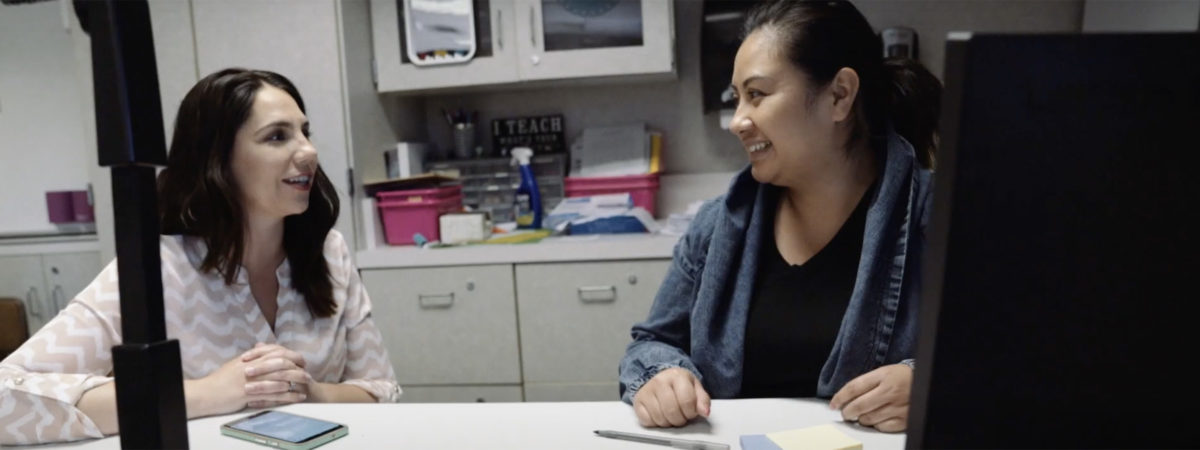
July 20, 2020 | By Jessica Jackson, Barbara Pape and Medha Tare
Why is it so important to have a strong research base to our web app, the Learner Variability Navigator (LVN), and its factors of learning?
Medha: Our website serves an important function of addressing the long-standing research-practice gap where a lot of evidence exists on how to support learners who have different needs, but it often goes unread or unused by practitioners. The different factors that we know impact learning encompass the whole child—not just their math and literacy skills but also their cognitive abilities, social-emotional states, and their personal background. All of these factors interact to impact a child’s readiness to learn when they come into the classroom. Bringing that research together can raise awareness of how to teach the whole child.
We’ve found in our national survey, Learning in the 21st Century: How the American Public, Parents, and Teachers View Education Priorities and How to Achieve Them, that only half of teachers rely on research to inform their practice. What do you think could be the reason they rate it lower than peers and instinct?
Jessica: It really comes down to context and accessibility. Whenever I’ve introduced a new strategy to a teacher, usually the first thing they want to know is will it work for their students, in their classroom, in their context. Knowing which strategies are research-based is one thing, but applying those strategies successfully can be a complex process with many variables to consider. Navigating those variables successfully comes with experience, which is why teachers often rely on their own experience and that of their esteemed peers.
However, research can be such a vital part of ensuring that teachers are making informed decisions and can give them insight into why some strategies may work better for some students. Yet, for most teachers, research is not very accessible and they don’t have time to comb through Google Scholar when they have a stack of papers waiting to be graded. Teachers are some of the busiest, hardest-working people I know; they need the latest research at their fingertips. That is why the Learner Variability Navigator is such a great resource for educators!
We’ve recently seen COVID-19’s devastating impact on school-based learning, and how a renewed drive to improve digital learning experiences for teachers and their students has emerged. What are the critical factors to consider when we create online professional learning experiences designed to help teachers engage in digital learning?
Jessica: As noted in our national survey, teachers rely on their experiences to make instructional decisions, so designing professional learning opportunities provides them new experiences to reflect and consider. It’s therefore critical that online professional learning opportunities exemplify best practices on how to use technology to engage, enhance, and extend learning. Dr. Liz Kolb’s Triple E Framework provides a rubric as well as the research behind why each component matters for supporting learning.
Jessica mentioned Dr. Kolb’s work, and you both have been in conversation with her about her unique framework. According to Dr. Kolb, the Triple E Framework is a “validated research-informed tool to assess how effectively the technology and instructional strategies around technology are helping to engage students in the learning goals, enhance students’ understanding of the learning goals, and extend students’ everyday connection to the learning goals.” Medha, can you tell us how Dr. Kolb uses LVN in her framework?
Medha: We were so glad to learn more about how Dr. Kolb uses LVN in concert with her framework because it shows the power of bringing these tools together in innovative ways in teacher preparation. She has her students consult the LVN’s bank of research-based strategies, both as they are developing their lesson and after they have already designed a lesson and scored it on the Triple E Framework. If their lesson receives a low score on her rubric, they turn to the LVN to search for new strategies and/or tools. For example, they use some of the classroom videos we have curated, such as this one on accessible vocabulary, to inspire innovative uses of technology.
Jessica, how do you see the Triple E Framework and LVN helping teachers provide teaching and learning experiences and opportunities for students online or in a school-based classroom?
Jessica: The LVN can help teachers understand the connection between learner factors and which strategies can mitigate the negative effects of those factors. Teachers use these strategies all the time, but understanding the connections between these strategies and learner factors across a whole child framework is essential for meeting the needs of each learner. Now that distance learning means students are learning from home, LVN can also be a great resource to help parents understand how certain factors are impacting their child and which strategies work best. For example, one of our Practitioner Advisory Board members, K.D. Meucci, made this workspace to help parents with strategies for supporting social and emotional learning at home.
Many teachers made the transition from classroom to distance learning overnight. There wasn’t a lot of time to research best practices. As we look to the fall, we have the opportunity to reimagine the role that technology plays in the learning process, and in our ability to address learner variability. Dr. Kolb’s Triple E Framework provides the research and tools teachers need to carefully consider the role they want technology to play in their lessons.
Together, the LVN and Triple E Framework can help teachers maximize the opportunity to thoughtfully integrate technology and ensure they are meeting the needs of each learner.
Explore the Learner Variability Navigator today. For more information on Dr. Liz Kolb’s Triple E Framework, read her blog post for the American Association for Colleges of Teacher Education (AACTE) and watch her accompanying videos.
By Sharin Jacob and Quinn Burke
By Dr. Kyle Dunbar and Katie Wilczak
By Elliott Barnes and Sara Mungall